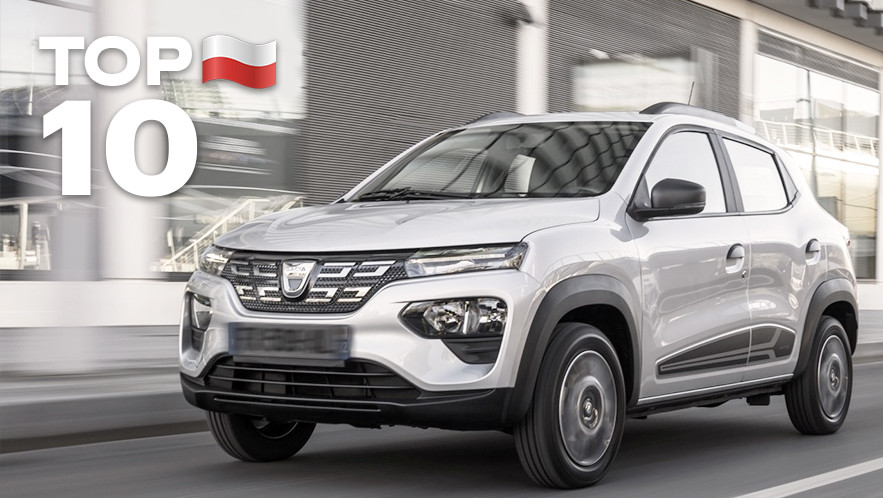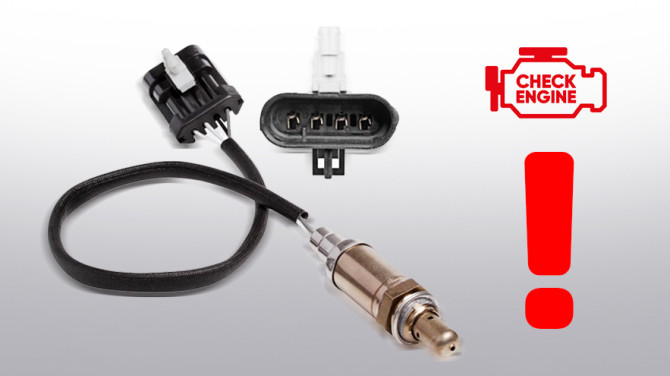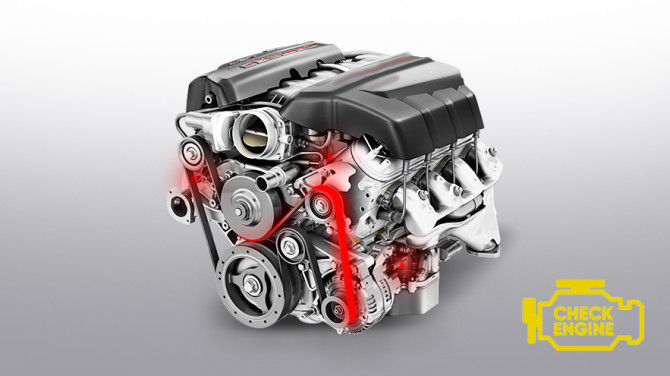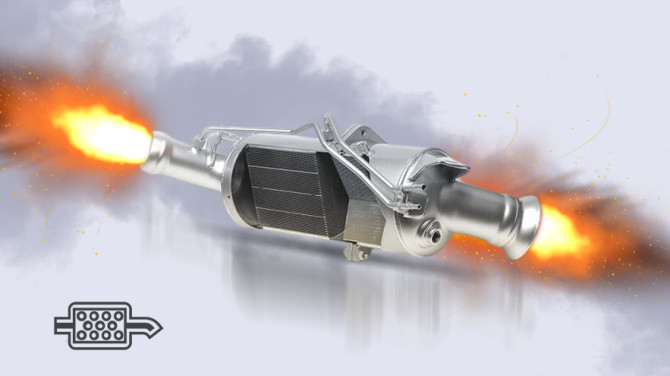Top 10 cheap electric cars: how much do they cost in Poland

The number of electric vehicles is steadily growing, and this process is gaining momentum. According to experts' forecasts (e.g., S&P Global Mobility), in 2025, the number of electric cars sold may increase by 30%. Although Poland is far from being a leader in the electrification of its vehicle fleet, the number of fully electric vehicles in the country has still increased by 41% over the past year. Unfortunately, not all of them were purchased new, which is understandable: offers on the secondary market are often much more attractive than the cheapest electric car from a dealership.
However, the launch of the NaszEauto programme, which provides funding for the purchase of electric cars, gives hope that environmentally friendly transport will continue to fill Polish roads. This is especially true if it encourages the emergence of affordable, high-quality electric cars on the market. Let's take a look at the new models that are available now or will be available in the near future.
Top 10 cheapest electric cars in 2025
In the list below, we have compiled a list of cheap electric cars that are already available or will soon appear on the Polish market.
1.Dacia Spring – from PLN 76,900
Since its debut in 2021, the Spring has held the title of the cheapest electric car in Poland: the price for any configuration has never exceeded PLN 100,000. Therefore, sales of this model in Europe were second only to the Tesla 3.
The car is based on the Renault Kwid city crossover, which is produced exclusively for the Indian and Brazilian markets. Although it is a product developed by the French company's Romanian subsidiary, it is not assembled at the Mioveni plant, but in China at Dongfeng's facilities. However, this internationalism does not harm it: owners have not reported any serious problems. The basic version is equipped with a 45 hp electric motor and a 26.8 kWh battery.
Pros – not only the affordable price, but also a range of 225-228 km, which is quite sufficient for city driving, as well as full equipment with a 7-inch display and Media Control multimedia system and front power windows even in the budget version. Those who like to go out into nature or to the countryside will appreciate the large boot for this class of car. In addition, the model is equipped with a bidirectional V2L charging system, which allows you not only to consume electricity, but also to feed it back into the grid or power external devices. The disadvantages are related to the price: not only are the interior materials of the lowest quality (which is typical for Dacia), but the car is also extremely slow for an electric vehicle, with acceleration from 0 to 100 km/h in 19.1 seconds and a top speed of only 110 km/h. acceleration to 100 km/h in 19.1 seconds and a top speed of only 110 km/h, as well as the fact that the maximum DC charging power is limited to 50 kW.
2. Hyundai Inster – from PLN 103,900
A new compact electric crossover from Hyundai. The Koreans already supply a lot of electric cars to the European market, but these models can hardly be called budget-friendly. This model is also significantly more expensive than the Dacia, but it is better equipped and more refined, and most importantly, it has much better performance. Even in the budget version, the Inster accelerates to 100 km/h in a respectable 11.7 seconds, and its top speed reaches 140 km/h. But the main feature is its range of 300 km. Climate control, a multimedia system with a 10.25-inch screen and keyless entry are already included in the standard package, and for an additional 5,000 PLN, you can get the Modern package with a leather steering wheel, 15-inch aluminium wheels, front and rear parking sensors and a two-level floor in the luggage compartment.
The more powerful version of the Hyundai Inster, with an engine power of 115 hp and a battery capacity of 49 kWh providing a range of 360-370 km, is only slightly more expensive, starting at 112,900 PLN. Other advantages of the model include its novelty (the car was only released in 2024), while the only drawbacks are the small size of the electric vehicle. However, small electric cars are better suited to city driving.
3.Citroen e-C3 – from PLN 107,950
Although the fourth generation of the popular French car, released in 2023, continues to be called a hatchback, it is actually a compact crossover. The electric car's design includes a number of nice innovations: Citroën Advanced Comfort suspension with special shock absorbers with hydraulic bump stops, and interior trim based on modern materials with new seats featuring an additional layer of foam. The Citroën C3 has a range of 320 km according to the WLTP measurement cycle. The battery is a modern LFP (Lithium Ferro Phosphate) type with a capacity of 44 kWh. It is promised that a cheaper version with a smaller battery and a range of 200 km will appear in 2025. But so far, the second version of the Citroën is the Fiat Grande Panda, which is slightly more expensive (costing from PLN 110,000). Both cars are built by the same Stellantis on the same platform, but have slight differences in appearance and in their PR. Their technical characteristics are completely identical.
The advantages of these cars include their comfort, luggage capacity and good mileage on a single charge. The disadvantages include some safety shortcomings. The cheap electric cars Citroën e-C3 and Fiat Grande Panda performed poorly in crash tests, particularly in Global NCAP.
4.Citroen e-C3 Aircross – from £120,800
The main difference between the Aircross and the standard C3 is its size and capacity. This crossover (no one is trying to call it a hatchback anymore) is 4.39 m long with a wheelbase of 2.67 m (the e-C3 is 4.02 m and 2.54 m, respectively). Ground clearance is over 20 cm (in the e-C3 it is 16 cm). The interior has 5 or 7 seats and a boot capacity of 460 litres. The electric car is equipped with a 113 hp electric motor (83 kW) and a 44 kWh battery, with a range of up to 300 km according to WLTP.
It is worth noting that this is the price of the cheapest electric car of the three (YOU, PLUS and MAX) configurations. This version includes LED headlights, basic air conditioning, cruise control and rear parking sensors. The 3D navigation system, touchscreen with Apple CarPlay/Android Auto, two-tone roof and 17-inch aluminium wheels are available at an additional cost.
Like its predecessor, the e-C3 Aircross has a technically identical twin from Stellantis' second brand: the Opel Frontera Electric, which is slightly more expensive, however, costing PLN 125,900 on the Polish market. Experts consider the spacious and functional interior with soft seats and comfortable suspension, which prevents driver fatigue on long journeys, to be the advantages of the Citroen e-C3 Aircross.
However, the range – and this is the main drawback of the electric crossover – is insufficient for this class of car, as is the rather sluggish acceleration (11 seconds to 100 km/h). In addition, many owners complain about the inconvenient control of some functions via the touch screen, such as the air conditioning.
5. Peugeot e-208 – from PLN 129,100
A stylish electric car with a 136 hp engine and a 50 kWh battery, providing a range of up to 350 km according to the WLTP cycle. The maximum speed is 150 km/h, and acceleration from 0 to 100 km/h takes 8.1 seconds. This is a real, not just a name, hatchback based on a popular model with an internal combustion engine.
Its advantages include modern design, advanced technology, rich basic equipment (blind spot sensor, lane departure warning system, automatic braking when reversing), high build quality and satisfactory range without charging. In addition, it can be charged from both a regular power outlet and a fast CSS port.
However, there are also quite a few drawbacks. These include not only a poor multimedia interface, but also more significant problems: inadequate cable routing, vague steering, and, according to owners, a much lower real range compared to WLTP data. Some even consider the prices for small Peugeot electric cars to be too high. The e-208 also has a ‘twin brother’ or ‘clone’: the Opel Corsa-e. Prices for this electric car are slightly higher, starting at PLN 129,900.
6.Opel Mokka Electric – from 130,000
The second generation of the Mokka is the first to be available in a fully electric version. It is again a compact crossover with a 136 hp electric motor, a 50 kWh battery and a range of up to 324 km according to the WLTP cycle. Acceleration from 0 to 100 km/h takes 9 seconds, and the top speed is 150 km/h. The basic version is equipped with climate control, cruise control and lane departure warning, but the multimedia system does not have Apple CarPlay/Android Auto. How much does an electric car cost in advanced configurations? The Elegance costs PLN 147,600, and the GS costs PLN 152,000.
The advantages of the car are its modern style with a distinctive front design and a fast battery charging system. The car's battery can be charged with a fast DC device with a power of up to 100 kW, which allows you to raise the charge level from 0 to 80% in about 30 minutes. A full AC charge of up to 11 kW takes approximately 5 hours and 15 minutes.
Cons: fairly short range, not very spacious, especially for a crossover, small boot (only 310 litres), no rear-wheel drive in any configuration.
7.Fiat 500e – from £130,900
This is the second generation of the 500 with electric drive, released in 2020. This car was originally designed as an electric vehicle. The car has its own original retro style and is available in a large number of body versions: a standard 3-door hatchback, with a folding roof, as well as an asymmetrical ‘3+1’ version with an additional pair of doors on the passenger side.
Pros: comfortable ride, large boot, excellent interior trim, new multimedia system and small turning circle (9.7 m), which is especially important for a city car.
Cons: cramped rear seats, not very powerful engine (95 hp) and small battery. The Fiat 500e has a range of only up to 190 km in the WLTP cycle. In addition, charging from the mains takes a very long time – more than 15 hours. All in all, the Fiat 500e is not a cheap electric car, but simply an entry-level version.
8.MG4 – from £130,900
For the same price, you can buy a Chinese hatchback that appeared on our market at the end of 2023. Its 170 horsepower engine and 51 kWh battery provide a range of up to 350 km. The basic version has a one-pedal function, keyless entry, adaptive cruise control, rear parking sensors and camera, 17-inch wheels, climate control, LED lights, a 7-inch digital instrument cluster and a multimedia system with a 10.25-inch touchscreen.
Pros of the car – decent dynamics – 7.7 seconds from 0 to 100 km/h, as well as an innovative 3-stage energy recovery system. The MG4 can be charged at a maximum power of 117 kW via a type 2 fast charging connector in less than 30 minutes from 10 to 80%. In addition to this decent equipment, the MG4 also has a very spacious interior.
Cons: poor noise insulation and confusing information system.
9.BYD Dolphin Active – from £136,000
Another Chinese hatchback. The BYD Dolphin has a more stylish and attractive design than its ‘compatriot’, but it lags behind in acceleration: only 12.3 seconds to 100 km/h. However, it has a range of 427 km according to WLTP, which is enough not only for city driving but also for suburban routes. Another difference between this electric car is its safety. The BYD Dolphin received 5 stars in Euro NCAP crash tests.
Other advantages of this electric car include its luxurious standard equipment. It includes a 12.8-inch swivel touchscreen, a 360° camera, driver assistance systems, front parking sensors and even heat pumps.
Cons: charging only with alternating current (AC) up to 7 kW in the Active version, as well as cheap Chinese-made interior materials, which are not very suitable for an electric car of this class and price category.
10.Hyundai KONA Electric – from 139,900
Korean cars are the most famous and popular electric cars in Poland and in Europe in general. This is a practical and versatile electric crossover with a 156 hp engine and 255 Nm of torque, a 48.6 kWh battery and acceleration from 0 to 100 km/h in 8.8 seconds. The maximum speed is 162 km/h, and the range is an impressive 454 km! In practical terms, this electric car is not only on par with its classmates, but also with cars with internal combustion engines. However, this EV is definitely not the answer to the question ‘how much is the cheapest electric car?’ The standard equipment includes dual-zone climate control, heated front seats and steering wheel, multimedia with a 12.3-inch screen, adaptive cruise control with Stop&Go, lane departure warning and many other options. The DC charging function up to 102 kW allows the battery to be charged from 10% to 80% in about 41 minutes.
Other advantages include remote control of the car's functions via a smartphone app, while the disadvantages are the lack of all-wheel drive and, in some cases, the fact that the electric version of the Hyundai KONA is significantly more expensive than the petrol version. However, this may be offset by the possibility of participating in the national NaszEauto programme.
| Model | Seats | Max. speed | Power (hp) | Battery capacity (kWh) | Charging time from 230V | Range (km) | Approximate price in Poland (PLN) |
| Dacia Spring | 4 | 125 km/h | 45 | 26.8 | ~13 hours | up to 230 | from 76,900 |
| Hyundai Inster | 5 | 140–150 km/h | 97–115 | 42–49 | ~6–7 hours | 327–370 | from 103,900 |
| Citroën e-C3 | 5 | 135 km/h | 113 | 44 | ~5 hours | up to 320 | from 107,950 |
| Citroën e-C3 Aircross | 5-7 | 145 km/h | 113 | 44 | ~5 hours | up to 306 | from 120,800 |
| Peugeot e-208 | 5 | 150 km/h | 136 | 48.1 | ~5–6 hours | up to 350 | from 129,100 |
| Opel Mokka Electric | 5 | 150 km/h | 136 | 50 | ~5–6 hours | up to 338 | from 130,000 |
| Fiat 500e | 4 | 135 km/h | 95 | 24 | ~4–8 hours | 190–320 | from 130,900 |
| MG4 | 5 | 160 km/h | 170 | 51 | ~5–6 hours | up to 350 | from 130,900 |
| BYD Dolphin Active | 5 | 160 km/h | 95 | 44.9 | ~5–6 hours | up to 427 | from 136,000 |
| Hyundai KONA Electric | 5 | 172 km/h | 156 | 65.4 | ~7–8 hours | up to 454 | from 139,900 |
Which electric car to buy
When choosing an electric car, you should focus not only on the price or range, but also on your lifestyle. If we consider the cars from our previous list, we can recommend the following:
- The Dacia Spring is ideal for those looking for the cheapest electric car, those who have more than one car in their garage, and those who plan to use it for city driving.
- The Hyundai Inster is suitable for those who want a new car with an urban character and decent range.
- The Citroen e-C3 will appeal to economical drivers looking for comfortable city and suburban travel.
- The Citroen e-C3 Aircross is suitable for large families or those looking for a compact crossover with the ability to travel outside the city.
- The Peugeot e-208 will suit young drivers or people who want a stylish city hatchback with good range.
- The Opel Mokka Electric will save those who need something compact but more ‘off-road’ in appearance and with a higher ride height.
- Fiat 500e – the perfect car for urban trendsetters or as a second car for short trips.
- MG4 is suitable for practical drivers who are looking for a lot of value for money.
- BYD Dolphin Active – a car for people who are not afraid of new things and appreciate innovation from China.
- Hyundai KONA Electric will be the choice for those looking for a versatile, well-equipped electric crossover for everyday use and travel.
Thus, it can be seen that today's electric vehicle market offers a good choice even among the cheapest models.
How much does it cost to insure an electric car?
Insurance prices for electric cars depend on several factors: the car model, the driver's age, driving experience, region of residence, etc. However, it is clear that the cost of civil liability insurance is significantly lower than for cars with internal combustion engines and even hybrids. The average insurance premium for an electric car is 591 PLN, while for a hybrid car it is 834 PLN, and for a car with a diesel engine it is 872 PLN.
For cars on our list, these amounts are even lower. For example, for the Fiat 500e, this figure ranges from PLN 350 to PLN 642, and for the Dacia Spring, it is only PLN 295 to PLN 479.
How much does it cost to repair an electric car?
It is difficult to give a definite answer to this question. On the one hand, electric cars are usually cheaper to maintain because they have fewer moving parts and require less consumables, but on the other hand, they are more expensive to repair if the battery or electronics are damaged.
STS, a company that has been repairing high-tech cars, including electric cars, for many years.
With STS, you will always have peace of mind about your electric vehicle!






